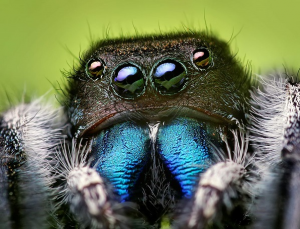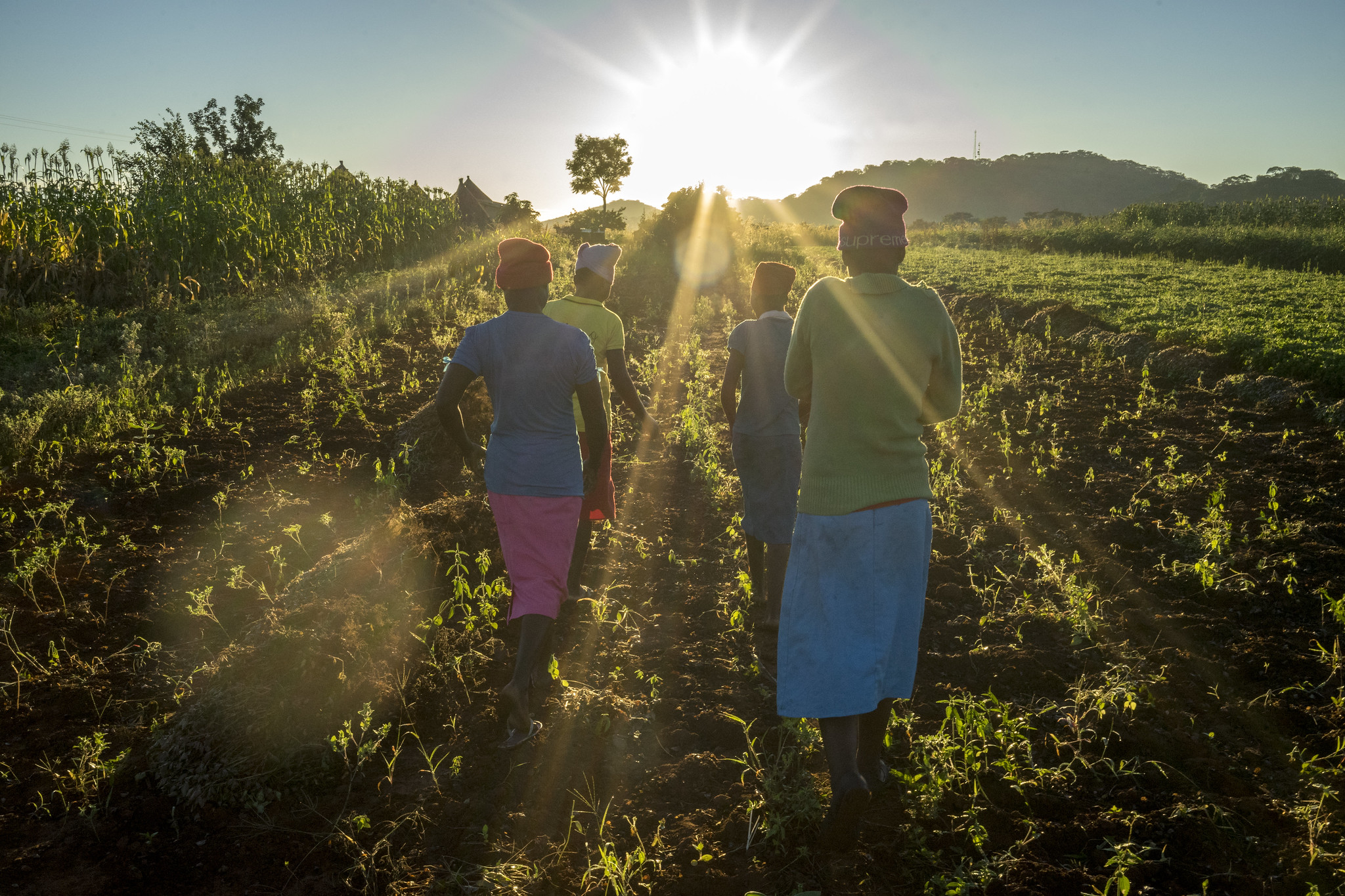
A new study explores how conservation agriculture in southern Africa supports spider populations and diversity in fields, which could help mitigate pest damage and potentially lead to higher yields for farmers. According to the Food and Agriculture Organization of the United Nations (FAO), herbivorous insects such as aphids, caterpillars and weevils destroy about one fifth of the world’s total crop production each year. Spiders can help keep voracious pests in-check, but conventional farming practices (e.g. tilling, crop residue removal and monoculture) can harm or drastically reduce these beneficial bio-control agents.
There are more than 45,000 identified spider species around the world. From glaciers to tropical rainforests, they inhabit every terrestrial ecosystem on earth. Some can even live in tidal zones, and at least one species inhabits fresh water. While we tend to associate spiders with webs, only about 50 percent of the species catch their prey this way; the rest hunt on plants, on the ground or below it, using a variety of tactics such as stalking, stabbing, crushing – even seduction.
Although spiders have been around for 300 million years, some species are at risk of extinction due to habitat loss and fragmentation. Drastic reductions in vegetation – whether from a new parking lot or a tilled field – removes the food source that attracts their prey. Bare ground exposes their nesting sites and themselves, which makes it harder to hunt and easier to be hunted by birds and small mammals.
At the Chinhoyi University of Technology experimental farm in Zimbabwe, a team of researchers aimed to determine the response of spiders under different agricultural practices. Conventional farmers often prepare their fields for planting by physically breaking up and inverting the top 6-10 inches of soil. This practice of ploughing prepares a fine soil tilth, which makes it easier to plant; it breaks up and buries weeds, and reduces soil compaction to aerate the soil. But tilling also increases topsoil erosion from wind and water. It accelerates soil carbon decomposition, reduces soil water infiltration and disrupts microorganisms living in the soil, including beneficial insects and spiders.
The researchers conducted two experiments over the 2013/2014 and 2014/2015 cropping seasons to see how tilling, crop residue retention (i.e. leaving stalks and post-harvest organic matter in the field), fertilizer application and weeding affected ground- and plant-wandering spider species. They hypothesized that spider abundance and diversity would increase with lower levels of soil disturbance and more plant cover.
The results showed direct seeding into no-till soil increased the abundance of spiders and the diversity of species. Mulching also showed a positive effect. Contrary to their hypotheses and results from temperate regions, the application of fertilizer and intense weeding did not affect the spider community. The researchers attributed this to the difference in climatic conditions (tropical vs. temperate) of this study in southern Africa.
“Often the government’s and farmer’s immediate reaction to a crop pest issue is to apply a pesticide, but we can make use of biological control agents, which may be cheaper and less damaging for the environment,” says Christian Thierfelder, a co-author of the study. Thierfelder is a cropping systems agronomist and conservation agriculture specialist with the International Maize and Wheat Improvement Center (CIMMYT) with long-term experience in sustainable intensification.
“Spiders, ants and beetles all do a really good job with little or no cost to the farmer,” he adds. “For us, it’s quite fascinating to see simple agronomic practices to affect and control crop pests. This also provides new avenues of dealing with the fall armyworm, an invasive species which has devastated crops across the majority of sub-Saharan Africa countries.”
A robust number of studies from Europe, Australia and North America have shown the link between conservation agriculture and biodiversity, but Thierfelder says that research on biodiversity in agronomic systems is relatively new in southern Africa. While the study in Zimbabwe helps fill this gap, more research is needed to show the connection between the abundance of spiders, beetles and ants with the suppression of insect pest activity.
For more information, read Spider community shift in response to farming practices in a sub-humid agroecosystem in southern Africa.
This research was jointly funded by Chinhoyi University of Technology (CUT) and the German Academic Exchange Program (DAAD). The CGIAR Research Program on Maize (MAIZE) supported this study through Christian Thierfelder’s contributions.

 Innovations
Innovations 


